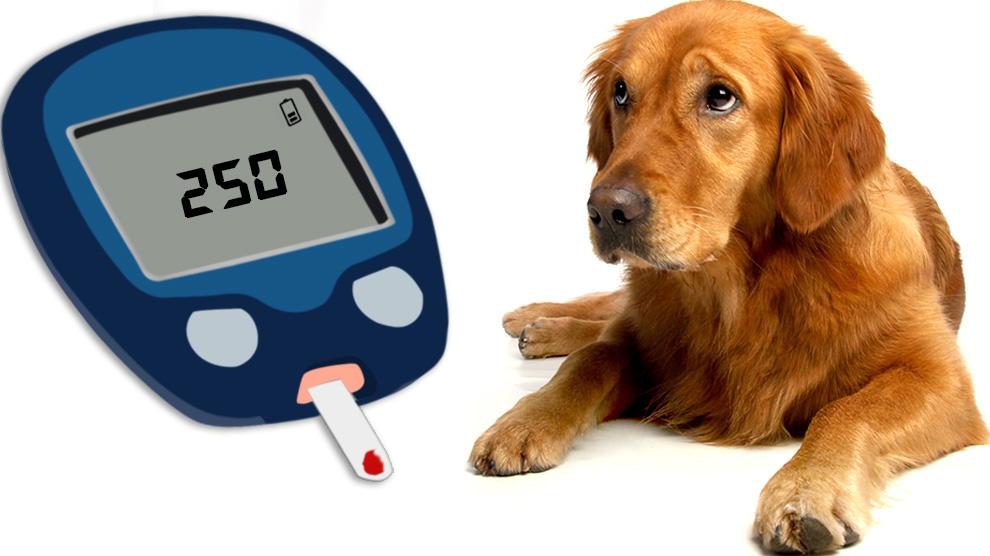Diabetes (Diabetes Mellitus) is common chronic disease in our pets just like it is in humans. It is caused by a lack of insulin in the body or the inability to respond to insulin. Insulin is a hormone which is made in the pancreas. It is released after a meal, to move glucose from the blood stream into the cells to make energy. If insulin is not effective then there is no glucose available for the body to use, it instead breaks down fat and protein which we see as weight loss. There are two types of diabetes. Type 1 is when the pancreas stops producing insulin (most commonly in dogs) and type 2 involves being resistant to the insulin that is produced (most common in cats). There is also a gestational type of diabetes but this is temporary.
Diabetes usually presents in middle aged to older animals with common clinical signs including increased hunger, thirst, urination and weight loss. If the condition remains untreated it can progress into a diabetic ketoacidosis which can be a clinical emergency. When there is not enough available glucose in the cells to use for energy and alternate sources are used, it increases ketone levels in the body. After a period of time this causes a metabolic acidosis and changing electrolytes which makes them become quite ill exhibiting a decreased appetite and vomiting, but can potentially be fatal.

To diagnose Diabetes, usually a blood and urine test are performed looking for elevated glucose levels; hyperglycaemia and glucosuria. Sometimes further tests will be indicated to identify secondary or complicating factors. Those commonly seen besides ketoacidosis are urinary tract infections, pancreatitis and hyperadrenocorticism or Cushing’s. For dogs another common complication is cataracts. This progressive blindness occurs to most dogs within the first few months of diagnosis. Surgery may be able to be performed to correct the cataracts however most dogs do quite well without the use of their sight. This tends not to be an issue in cats. Monitoring your pets water intake and urination at home is a very effective way of determining how effective the treatment plan is. Keeping a diary of each day can be very helpful for ongoing management. These days there are apps we can use to help with monitoring symptoms.

Treatment most often involves twice daily insulin injections under the skin. In dogs, this needs to shadow meal times to make sure they have eaten, otherwise the insulin may create a hypoglycaemia which can be very serious causing seizures. Often injections are given at the back of the neck and most animals tolerate really well. The injections are given using insulin syringes however there are also insulin pens which can be used to facilitate administration. Your vet will determine what is the most appropriate type of insulin to be used and how much should be given. Depending on how unwell your animal is they may require a few days in hospital initially to stabilise their condition, from there they can usually be treated on an outpatient basis. It can take some time and multiple vet visits before the right management is reached but once stable, check-ups are usually every 3-6 months.

Other important factors of treatment include diet, exercise and consistency. There are prescription diets tailored to those who are diabetic which help deliver an appropriate well-balanced meal. The most important factor to the diet however is consistency and routine. It is important to feed the same type of food, in the same amount at the same time each day. Regular low impact exercise is also an important part of effective management to be able to control weight but also to maintain blood glucose levels. If one day your pet does a large amount of exercise, expending more energy than usual, it will burn more glucose and be at risk for low blood glucose levels. Again, consistency and routine are the key to effective management!

Diabetes is a lifelong condition that requires commitment but if done correctly and concurrent issues are well managed, animals are able to live full healthy lives.






